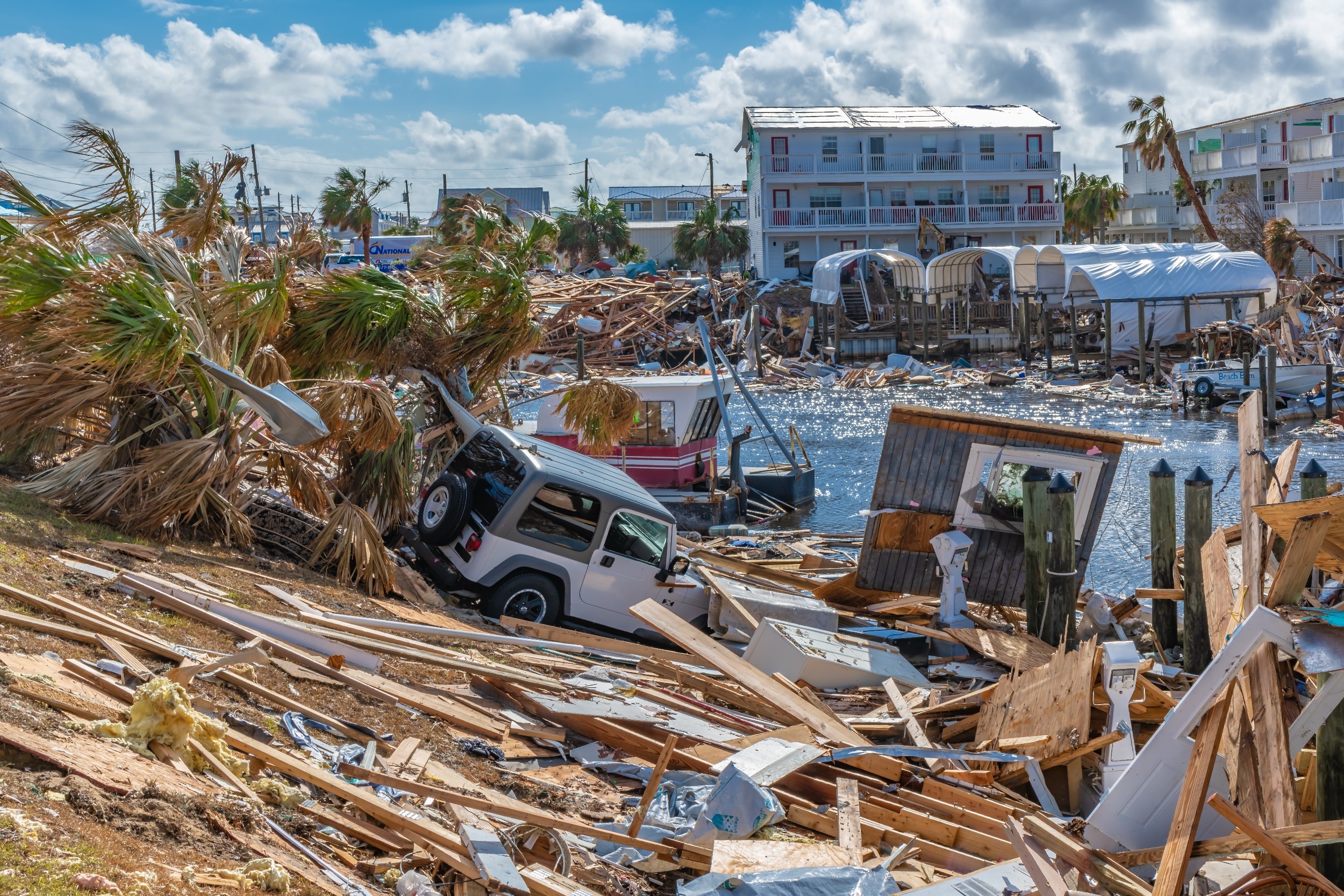Meteorologists are currently monitoring Tropical Storm Laura and Tropical Depression 14, which are at risk of strengthening into Category 1 hurricanes in the coming days, before making landfall in the US early next week. If the forecasts are correct, the hurricanes will contribute to what is expected to be a more severe than usual hurricane season for the Caribbean and the Atlantic coast of Central and North America. Coupled with this, the ongoing COVID-19 pandemic is in danger of reducing the ability of affected countries to respond to hurricanes, and subsequently exacerbating the consequences.
Forecasts
Since this year’s hurricane season began on 01 June, there have already been a record number of storms. The US body responsible for predicting and monitoring storms in the Atlantic (NOAA) has released a number of forecasts, all of which predict a greater number of hurricanes than usual. The average season experiences six regular and three major (Category 3 and above) hurricanes; this year, between seven and eleven regular hurricanes, and three and six major hurricanes are expected.
So far, there have been two Category 1 hurricanes, Hurricane Hanna and Hurricane Isaias. The latter was more destructive, killing 13 people and causing damage worth over $4bn in the Caribbean and along the east coast of the US and Canada. As of 21 August, meteorologists were monitoring Tropical Storm Laura and Tropical Depression 14 in the Atlantic, which are both at risk of strengthening into Category 1 hurricanes before making landfall in the US. Two hurricanes making near simultaneous landfall in the US is a rare event, and will be a further stretch on resources.
Optimal Conditions
Meteorological conditions are expected to be near optimal for the creation of hurricanes in the Atlantic. Currently, the weather event La Niña is expected to develop this autumn, allowing storms to form without interruption. Furthermore, above-average sea temperatures are being recorded in the Atlantic basin, which provides warm surface water for potential hurricanes. Both these conditions increase the likelihood of tropical storms forming, and worsening into hurricanes.
There is also a suspected link between climate change and hurricane severity. Warmer seas are thought to make hurricanes wetter, and therefore increase rain and flooding. Also, higher sea levels are likely to strengthen coastal storm surges and cause greater damage. However, climate change is not thought to increase the frequency of hurricanes, with some suggestions that warmer sea temperatures increase the severity of hurricanes but decrease their frequency.
COVID-19
Already stretched resources will be pushed even further this hurricane season as governments also try to cope with the COVID-19 pandemic. With economies crippled, social distancing measures in place and resources already used elsewhere, precautions to limit hurricane damage will be harder to procure and more difficult to install. As a result, poorer nations, such as the Caribbean islands, are likely to suffer more severely from the combined effects of the pandemic and hurricane season in comparison to richer countries like the US.
During a hurricane, the quality of healthcare is at risk of deteriorating as hospitals attempt to care for both coronavirus patients and hurricane victims. Furthermore, evacuations are likely to be less efficient as social distancing and PPE considerations will complicate matters. Social distancing measures mean that shelters will be able to hold less evacuees, and concerns about the risk of infection at shelters is expected to discourage some from visiting them altogether. In the US, states most likely to experience hurricanes are currently some of the worst affected by the virus, namely Florida and Texas. Hurricane Isaias forced the closure of a number of COVID-19 testing facilities in Florida, which will have inevitably delayed preventive measures to control the virus, setting back the state’s recovery.
In the aftermath of a hurricane, foreign humanitarian agencies are expecting to find it more difficult to help those affected abroad due to coronavirus-related border restrictions. Aid budgets are likely to be reduced as government’s struggle economically. And the allocation of limited resources will require a trade-off between tackling the virus or repairing hurricane damage, with the prioritisation of one forfeiting the success of the other.
NGS Recommendations
NGS advises that travellers should:
– Watch for storm warnings before travelling to areas at risk of hurricanes
– Monitor local media and news for updates to the meteorological environment
– Become familiar with local warning systems
– Review travel insurance to ensure coverage in the event of natural disaster, including unexpected expenses, and evacuation
– Ensure evacuation plans are in place before travel
– Maintain contact with travel operators and hotels regarding validity of flights and bookings
– Retain communications with family and contacts at home
– Make contingency plans for disruption to travel, considering routes in and out of affected areas, access to airport and hospitals
– Prepare a waterproof pack of essential items: bottled water, medications, food, radio, travel docs
– Carry spare charging devices and be mindful of the network coverage in country
– Have to hand a hard copy of assistance company contact information, as well as main employer POC
– Be aware of security risks, including looting
– Be prepared to move to a safe place at short notice, keeping travel documents available
– Follow the advice of local authorities at all times
Author: Lauren Snelling, NGS Risk Analyst
NGS is an emergency evacuation company that runs tracking, remote medical and security operations for global clients.
Contact: risk@northcottglobalsolutions.com
